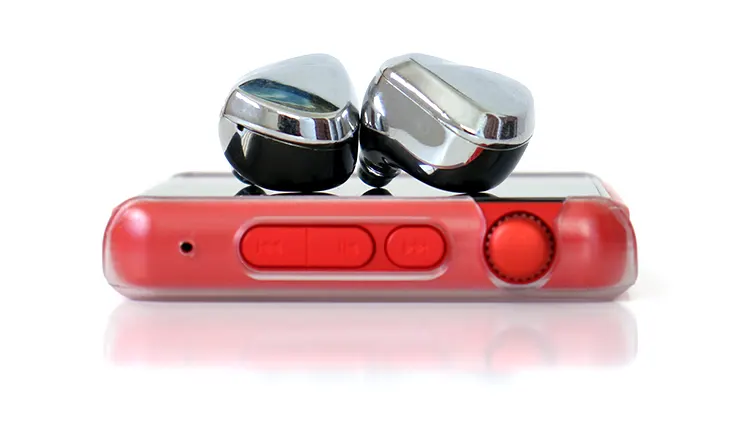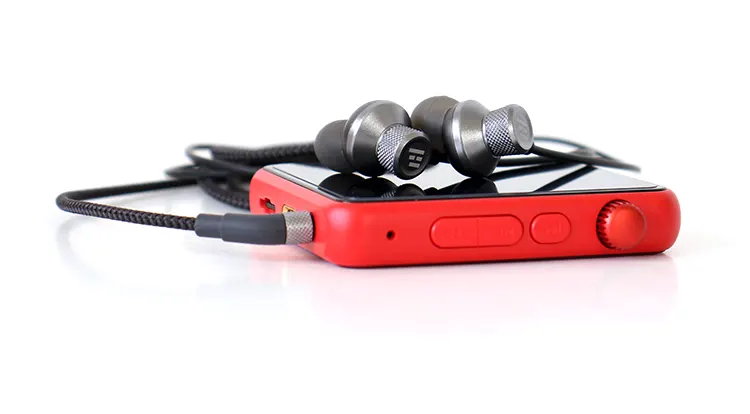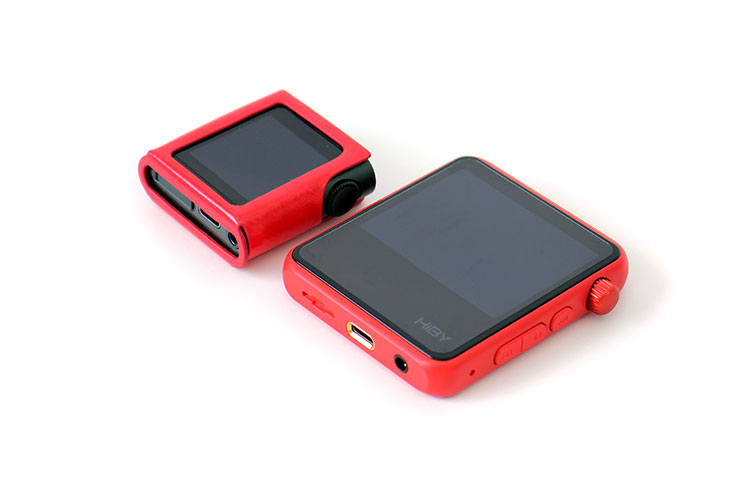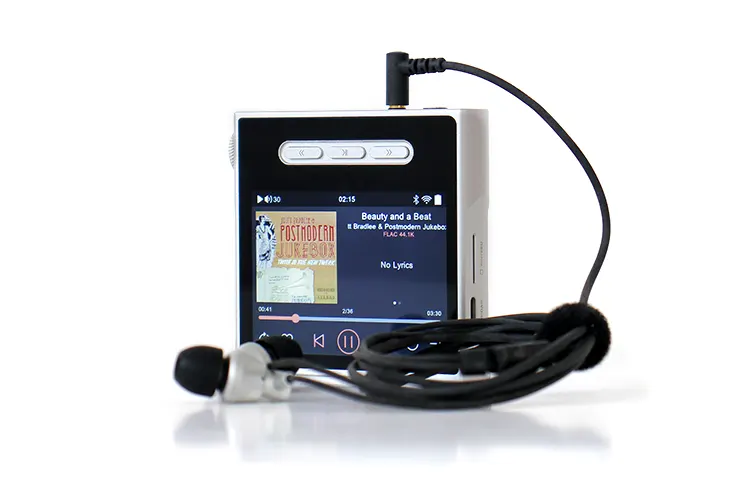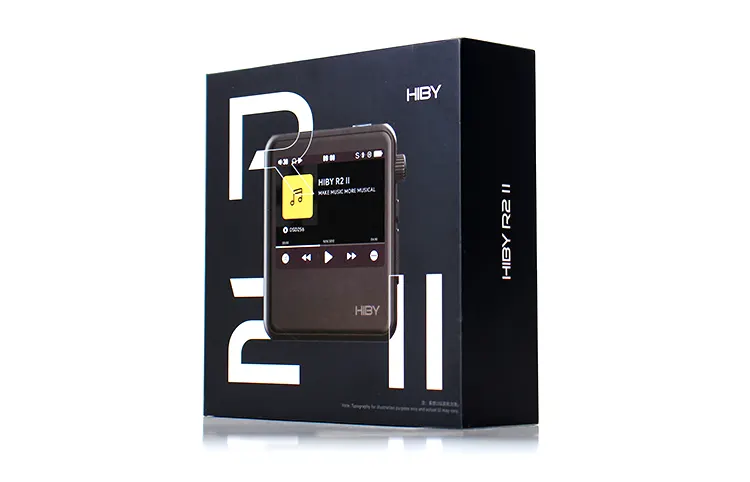Sound Impressions
I agree with HiBy and their assessment when they specifically said that their general objective in the R2 II sound signature was to obtain a warm vocal forward presentation with low sibilance, and controlled high-frequency output. That’s what they got in a nutshell.
I would consider the overall sound signature of the HiBy R2 II as neutral to slightly warm since the upper regions seem to be shy and controlled for presence. There’s an inherent smoothness to the overall signature that seems to work well with bright-sounding IEMs best which are plentiful.
The bass comes through nicely and so does the midrange in a warm manner but the high frequencies seem to be quelled around 2 or 3 decibels from the rest of the spectrum and that seems to be done purposefully. You could always use the EQ or the MSEB feature to obtain a brighter signature.
I would leave it alone since not only does that soften the overall signature but hiss is also contained even further since it’s at those high frequencies that hiss occurs mostly. Again, most of these devices have an inactivity mute feature so it would be difficult to provoke any hiss production.
Staging & Dynamics
There is a respectable amount of dynamic character that comes through although attack and decay seem to be trimmed down. So a soft-natured but natural definition of tones emerges. There’s little drama but no Tinnitus either.
The staging capabilities are good and my only critique would be a slight loss of sharpness and definition around elements that gets a small smear treatment due to the overall smoothness in the overall presentation. It’s a choice between Shreek and sharp or smooth and relaxing. I prefer the latter.
Wireless Performance
Bluetooth
The HiBy R2 II uses a Bluetooth 5.0 radio to transmit and receive a signal although for some reason HiBy states that the R2 II is only a receiver. You could do both but not simultaneously since the device seems to only accept one Bluetooth pairing at a time.
So, you could connect the R2 II to a PC via USB and transmit its audio to a TWS or you could simply use the R2 II internal player to transmit to a TWS. What it can’t do is receive a BT transmission and then re-transmit to a TWS.
I will certainly forgive any shortcomings even though to me there are none. The reason is that the R2 II is capable of LDAC-level codec. Plus it plays well with other codecs like aptX, UAT, AAC, and the universally compatible SBC.
Range and latency were both within acceptable levels. The capable transmission distance was respectable, almost stellar. However, the latency might not be optimized for video since I noticed a slight delay in transmitting video sound to the R2 II.
Perhaps you could remedy this by using the aptX LL variant codec. With music listening, latency doesn’t make an ill difference.
WiFi
The HiBy R2 II also has a 2.4gHz WiFi radio that is capable of talking to a DLNA-capable device or an Apple Airplay device to stream music into the R2 II wirelessly. You can also access a NAS plus import files into the R2 II from said devices.
Now, I didn’t use the WiFi streaming features much but the little bandwidth I did put through the R2 II was smooth with no abnormal delays, dropouts, or disconnects. You can also do firmware updates thru WiFi on this model.
Synergy
Power
I would stick to IEMs and efficient ones at that. There’s only 90mW available and I would run some full-sized headphones with the R2 II but they have to be the most efficient models and not demanding far as current.
The R2 II amplification section doesn’t seem to be a high current driver and voltage. Even on high gain, it will max out at around 2 volts which makes this DAP a good IEM driver but I wouldn’t venture above that.
Remember, you could use the R2 II to drive a TWS via Bluetooth which will allow you to obtain the best battery life in general. The versatility level allows for options.
IEM Pairing
One of the IEMs I usually pull from the shelf to test a DAP’s ability to quell harshness is the Tri I3 which is a tribrid IEM configured with a dynamic driver, a BA, and a planar driver. This one has notoriously harsh highs and an upper midrange peak.
The R2 II made this IEM sound warm in comparison by quelling the harsh high frequencies but kept the vocals warm and inviting. It also quelled frequencies in the upper midrange. Again, moving to a single dynamic produced similar results.
For example, the Meze Rai Solo has some peaks between 1kHz and 4kHz that were slightly tamed also. You might lose dynamic response and detail with high-tier models.
It seems to cater to its price bracket in which there are loads of IEMs with similar characteristics that present harsh treble or midrange peaks. And by the R2 II purposely taming these areas, it works out well with IEMs appropriately within its similar price range.
Select Comparisons
Shanling M0 Pro
Price $129.00
Technical
Since the M0 Pro was recently reviewed and is fresh in the memory bank I thought it would make an interesting comparison and contrast device. Even though they’re similar devices with similar features.
You get a Deja Vu feeling when you find out both these models use the same ES9219C DAC plus the same X1000 processor. However, the M0 Pro doubles up so technically it should have better data dominion but it also uses more battery power so bear that in mind.
Both these models have a single 3.5mm output port but the M0 Pro has an advantage due to an available 3.5mm to 4.4mm adapter which also supplies a higher amount of power. If your particular IEM uses a 3.5mm TRRS balanced connection then it will work without the adapter just the same.
All of the other features remain similar including the 2TB micro SD card capacity, an app that enables remote control capabilities from a mobile device. If you’re an IOS user it might fare you best to get the R2 II since the app offered with the M0 Pro doesn’t work on that platform.
Design
The major difference in design lies in its size and construction. First off, the M0 Pro seems to be half the size of the R2 II. But there’s always a but, right? The M0 Pro screen size is only 1.5 inches versus the 2.45 inches offered on the R2 II. So the smaller size does have a drawback far as screen size.
The M0 Pro does step it up a notch by constructing the shell from a CNC-shaped solid piece of aluminum alloy and it does feel robust but it seems to remain light far as weight at only 36.8 grams.
The M0 Pro has no power button and it passes on that duty to the rotary volume control employing a press to activate implementation. Is that a pro or a con? Well, the power button on the R2 II is backlit and is informative by displaying a color that gives you the power and charging status along with format and bitrate information.
Performance
To keep this a fair fight I will only refer to both units while using their single-ended outputs. Again, Déjà vu. They both have the same DAC and the same 90mW output rating.
Both these DAPs sound similar and only when you tap into the balanced output of the M0 Pro do you notice a difference with a slight increase in dynamic performance. If you have a keen ear you’ll also notice better channel separation and a more defined plus slightly wider soundstage as a result of the dual channel output.
So if you go balanced there is an increase in performance by using the M0 Pro but there’s an extra cost since you have to purchase the balanced output adapter separately.
However, if you go single-ended, then you will obtain an almost indistinguishable sound signature from both models but you lose some screen real estate space on the M0 Pro plus the R2 II is the only model that has a dual microphone with a voice recording feature that might come in handy one day.
Shanling M1s
$229.00
Technical
The Shanling M1s is another model that was recently put through some scrutiny here at the office. I consider it to be an in-between model and not so much a starter model and one with similar features.
Using a similar single SoC DAC chip configuration, the M1s uses a single ES9038Q2M but then compliments it with a pair of Ricore RT6863 amplifiers. These extra goodies also increase the price tag
The M1s also steps up to an X2000 processor but in all honesty, I find both processors to be similar in performance. There is a slightly slower boot-up time on the R2 II of around 3 seconds but waiting that amount of time won’t kill you.
Design
One aspect I like about the R2 II is the reduced girth of the case and rounded corners. The extra girth of the M1s is due to the solid aluminum alloy body and although this adds a level of solidity but also adds some weight.
If it was up to me I would have placed the buttons that were placed up in front of the M1s to the empty left side panel and increased the screen size but that would certainly add an extra cost on both models.
Performance
Of course, the M1s performs slightly better, it has twice the power and a dual amplifier chip setup plus a beefier processor. But this is only in certain circumstances, for example, in case you want to push less efficient IEMs.
These three DAPs all have ESS technologies DAC sections so they seem to have similar sonic traits. What makes them sound different, especially in the case of the M1s is the amplification section. In the case of the M0 Pro, the extra power comes from the double SoC setup.
Feature-wise there’s not much of a difference between the two or even all three. They all have an app that enables remote control capability and have the same SD card capability. but you can access files on your mobile device from the M1s but not from the R2 II it seems.
The one feature that the R2 II has over the M1s is the built-in microphone system and the sound recorder. So it would be a choice between an extra beefy output or a lower-priced model that can competitively do most chores similarly except for the ability to drive less efficient headgear.
Our Verdict
The HiBy R2 II is not only a good performer far as sound quality is concerned but it has a ton of features for the average price of a dinner for two which makes it quite a high-value purchase.
It’s a great starter unit and it does so many things that I lost count of how many functions this little guy has. It’s a Bluetooth transmitter and receiver, a dongle DAC, a desktop DAC amplifier, or a laptop soundcard replacement. It can also stream music through Wifi and then there’s the built-in player and the voice recorder.
The HiBy R2 II screams high value for it does all that for under a ‘C note’. I recently realized that audio gear is the one investment presently that, unlike other items you can purchase, gives you more for less as time goes by. The HiBy R2 II is a perfect example that displays that phenomenon.
HiBy R2 II Technical Specifications
- Operating system: HiBy OS
- SoC: Ingenic X1000E
- DAC: ES9219C
- Dimensions: 71 x 63.1 x 12.4 mm
- Weight: 70.6 grams
- Display size: 2.45 inches
- Resolution: 480 x 360
- Battery size: 1000mAh
- Removable storage: Micro SD card slot supporting up to 2TB
- USB: USB type C 2.0
- Continuous playtime: 15 hours (SE output)
- Standby time: 500 hours
- Bluetooth version: BT 5.0
- WiFi bands: 2.4
- 5mm port output” 90mW
- 5mm port THD-N: 0.0005%



